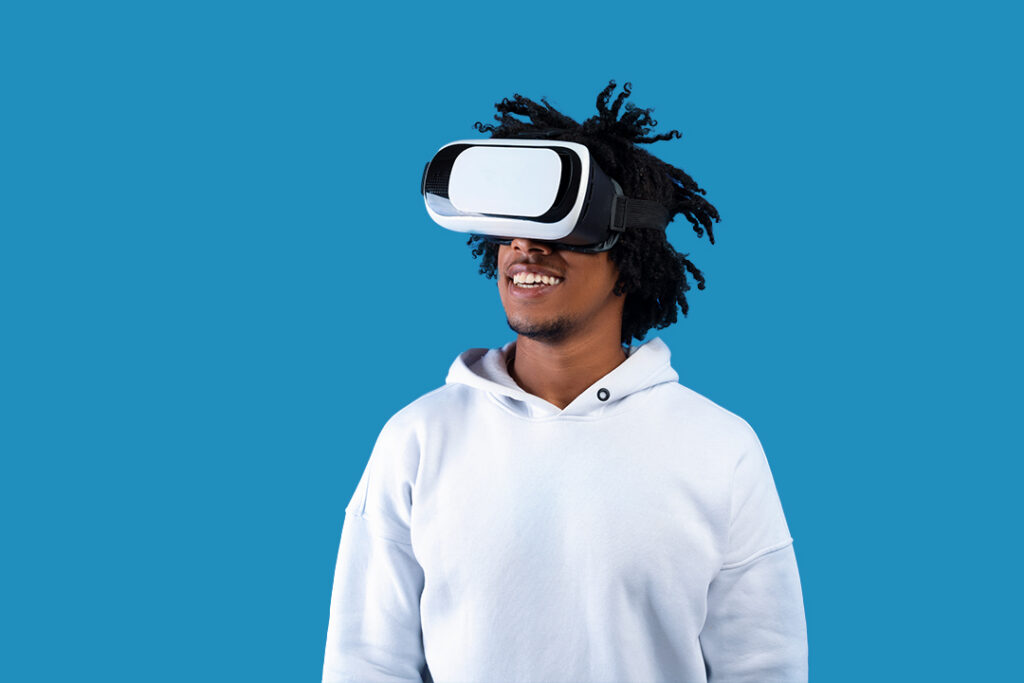Baumel A. (2015). Online emotional support delivered by trained volunteers: users’ satisfaction and their perception of the service compared to psychotherapy, Journal of Mental Health, 24 (5), 313-320.
Bradford, S., & Rickwood, D. (2012). Adolescent’s preferred modes of delivery for mental health services. Child and Adolescent Mental Health, 19(1), 39-45
The Children’s Society. (2018). The Good Childhood Report 2018. London: The Children’s Society.
Cooper, M., van Rijn, B., & Chryssafidou, E. (2018). Avatar-based counselling for psychological distress in secondary school pupils: pilot evaluation. British Journal of Guidance & Counselling, 1-14.
Coulson, N. S., Bullock, E., & Rodham, K. (2017). Exploring the Therapeutic Affordances of Self-Harm Online Support Communities: An Online Survey of Members. JMIR Mental Health, 4(4), e44.
Dowling M. & Rickwood D. (2013). Online Counseling and Therapy for Mental Health Problems: A Systematic Review of Individual Synchronous Interventions Using Chat. Journal of Technology in Human Services, 31 (1), 1-21
Fitzpatrick, K. K., Darcy, A., & Vierhile, M. (2017). Delivering Cognitive Behavior Therapy to Young Adults With Symptoms of Depression and Anxiety Using a Fully Automated Conversational Agent (Woebot): A Randomized Controlled Trial. JMIR Ment Health, 4(2), e19.
Fleming, T. M., Bavin, L., Stasiak, K., Hermansson-Webb, E., Merry, S. N., Cheek, C. Lucassen, M., Lau, H.M, Pollmuller, B. & Hetrick, S. (2017). Serious Games and Gamification for Mental Health: Current Status and Promising Directions. Frontiers in Psychiatry, 7(215).
Fleming, T., Dixon, R., Frampton, C., & Merry, S. (2012). A pragmatic randomized controlled trial of computerized CBT (SPARX) for symptoms of depression among adolescents excluded from mainstream education. Behav Cogn Psychother, 40(5), 529-541.
Fleming, T., Bavin, L., Lucassen, M., Stasiak, K., Hopkins, S., & Merry, S. (2018). Beyond the Trial: Systematic Review of Real-World Uptake and Engagement With Digital Self-Help Interventions for Depression, Low Mood, or Anxiety. J Med Internet Res, 20(6), e199.
Freeman, D., Bradley, J., Antley, A., Bourke, E., DeWeever, N., Evans, N., et al. (2018). Virtual reality in the treatment of persecutory delusions: Randomised controlled experimental study testing how to reduce delusional conviction. British Journal of Psychiatry, 209(1), 62-67.
Freeman, D., Haselton, P., Freeman, J., Spanlang, B., Kishore, S., Albery, E., et al (2018). Automated psychological therapy using immersive virtual reality for treatment of fear of heights: a single-blind, parallel-group, randomised controlled trial. The Lancet Psychiatry, 5(8), 625-632.
Ging, D., & Garvey, S. (2017). ‘Written in these scars are the stories I can’t explain’: A content analysis of pro-ana and thinspiration image sharing on Instagram. New Media & Society, 20(3), 1181-1200.
Glasheen K., McMahon M., Campbell M., Rickwood D. & Shochet I. (2018). Implementing Online Counselling in Australian Secondary Schools: What Principals Think. Int J Adv Counselling, 40, 14-25.
Griffiths, K. M. (2017). Mental health Internet support groups: just a lot of talk or a valuable intervention? World Psychiatry, 16(3), 247-248.
Grist, R., Porter, J., & Stallard, P. (2017). Mental Health Mobile Apps for Preadolescents and Adolescents: A Systematic Review. J Med Internet Res, 19(5), e176.
Grist, R., Porter, J., & Stallard, P. (2018). Acceptability, Use, and Safety of a Mobile Phone App (BlueIce) for Young People Who Self-Harm: Qualitative Study of Service Users’ Experience. JMIR Ment Health 2018;5(1):e16
Grist, R., Cliffe, B., Denne, M., Croker, A., & Stallard, P. (2018). An online survey of young adolescent girls’ use of the internet and smartphone apps for mental health support. BJPsych Open, 4(4), 302-306.
Hanley T. (2009). The working alliance in online therapy with young people: preliminary findings. British Journal of Guidance & Counselling, 37 (3), 257-269.
Hollis, C., Falconer, C. J., Martin, J. L., Whittington, C., Stockton, S., Glazebrook, C., & Davies, E. B. (2017). Annual Research Review: Digital health interventions for children and young people with mental health problems – a systematic and meta-review. Journal of Child Psychology and Psychiatry, 58(4), 474-503.
Hollis C, Sampson S, Simons L, Davies EB, Churchill R, Betton V, Butler D, Chapman K, Easton K, Gronlund TA, Kabir T, Rawsthorne M, Rye E & Tomlin A. (2018). Identifying research priorities for digital technology in mental health care: results of the James Lind Alliance Priority Setting Partnership. The Lancet Psychiatry, 5 (10), 845-854.
Huckvale K., Prieto JT., Tilney M., Benghozi PJ & Car J. Unaddressed privacy risks in accredited health and wellness apps: a cross-sectional systematic assessment. BMC Medicine, 13, 214.
Kendal, S., Kirk, S., Elvey, R., Catchpole, R., & Pryjmachuk, S. (2017). How a moderated online discussion forum facilitates support for young people with eating disorders. Health Expect, 20(1), 98-111.
Leigh S. & Flatt S. (2015). App-based psychological interventions: friend or foe? Evidence Based Mental Health, 18, 97-99.
Lenhard, F., Andersson, E., Mataix-Cols, D., Rück, C., Vigerland, S., Högström, J., et al (2017). Therapist-Guided, Internet-Delivered Cognitive-Behavioral Therapy for Adolescents With Obsessive-Compulsive Disorder: A Randomized Controlled Trial. Journal of the American Academy of Child & Adolescent Psychiatry, 56(1), 10-19.e12.
Lerman, B. I., Lewis, S. P., Lumley, M., Grogan, G. J., Hudson, C. C., & Johnson, E. (2016). Teen Depression Groups on Facebook: A Content Analysis. Journal of Adolescent Research, 32(6), 719-741.
Lucassen, M. F. G., Merry, S. N., Hatcher, S., & Frampton, C. M. A. (2015). Rainbow SPARX: A Novel Approach to Addressing Depression in Sexual Minority Youth. Cognitive and Behavioral Practice, 22(2), 203-216.
Merry, S. N., Stasiak, K., Shepherd, M., Frampton, C., Fleming, T., & Lucassen, M. F. G. (2012). The effectiveness of SPARX, a computerised self help intervention for adolescents seeking help for depression: randomised controlled non-inferiority trial. BMJ: British Medical Journal, 344.
Ofcom (2016). Children and parents: media use and attitudes report. London: Ofcom.
O’Reilly, M., Dogra, N., Whiteman, N., Hughes, J., Eruyar, S., & Reilly, P. (2018). Is social media bad for mental health and wellbeing? Exploring the perspectives of adolescents. Clin Child Psychol Psychiatry, 23(4), 601-613.
Perry, Y., Werner-Seidler, A., Calear, A., Mackinnon, A., King, C., Scott, J. et al (2017). Preventing Depression in Final Year Secondary Students: School-Based Randomized Controlled Trial. J Med Internet Res, 19(11), e369.
Pham Q., Wiljer D. & Cafazzo JA. (2016). Beyond the Randomized Controlled Trial: A Review of Alternatives in mHealth Clinical Trial Methods. JMIR Mhealth Uhealth, 4(3), e107
Poppelaars, M., Tak, Y. R., Lichtwarck-Aschoff, A., Engels, R. C., Lobel, A., Merry, S. N. et al. (2016). A randomized controlled trial comparing two cognitive-behavioral programmes for adolescent girls with subclinical depression: A school-based program (Op Volle Kracht) and a computerized program (SPARX). Behav Res Ther, 80, 33-42.
Prescott J., Hanley T & Ujhelyi K. (2017). Peer Communication in Online Mental Health Forums for Young People: Directional and Nondirectional Support. JMIR Ment Health, 4 (3), e29.
Rehm, I. C., Foenander, E., Wallace, K., Abbott, J.-A. M., Kyrios, M., & Thomas, N. (2016). What Role Can Avatars Play in e-Mental Health Interventions? Exploring New Models of Client–Therapist Interaction. Frontiers in Psychiatry, 7, 186.
Rice, S. M., Goodall, J., Hetrick, S. E., Parker, A. G., Gilbertson, T., Amminger, G. P. et al. (2014). Online and Social Networking Interventions for the Treatment of Depression in Young People: A Systematic Review. J Med Internet Res, 16(9), e206.
Robotham, D., Satkunanathan, S., Doughty, L., & Wykes, T. (2016). Do We Still Have a Digital Divide in Mental Health? A Five-Year Survey Follow-up. J Med Internet Res, 18(11), e309.
Rus-Calafell, M., Garety, P., Sason, E., Craig, T. J. K., & Valmaggia, L. R. (2017). Virtual reality in the assessment and treatment of psychosis: a systematic review of its utility, acceptability and effectiveness. Psychological Medicine, 48(3), 362-391.
Van Rijn, B., Cooper, M. & Chryssafidou, E. (2017). Avatar‐based counselling for young people within school counselling. Qualitative analysis of client experience. Counselling & Psychotherapy Research, 18 (1), 59-70.
Valimaki, M., Anttila, K., Anttila, M., & Lahti, M. (2017). Web-Based Interventions Supporting Adolescents and Young People With Depressive Symptoms: Systematic Review and Meta-Analysis. JMIR Mhealth Uhealth, 5(12), e180.
Valmaggia, L. R., Latif, L., Kempton, M. J., & Rus-Calafell, M. (2016). Virtual reality in the psychological treatment for mental health problems: An systematic review of recent evidence. Psychiatry Research, 236, 189-195.
Vigerland, S., Ljotsson, B., Thulin, U., Ost, L. G., Andersson, G., & Serlachius, E. (2016). Internet-delivered cognitive behavioural therapy for children with anxiety disorders: A randomised controlled trial. Behav Res Ther, 76, 47-56.
Wick, M. R., & Harriger, J. A. (2018). A content analysis of thinspiration images and text posts on Tumblr. Body Image, 24, 13-16.
Williams, A. J., Nielsen, E., & Coulson, N. S (2018). “They aren’t all like that”: Perceptions of clinical services, as told by self-harm online communities. Journal of Health Psychology [ePub ahead of print].





